The Karnak Temple Complex, a historic jewel of ancient Egypt, continues to unveil secrets from a bygone era. Among its latest findings, archaeologists discovered a fragment Colossal Hand Fragment of King Amenhotep III one of Egypt’s most illustrious pharaohs. This extraordinary artifact provides both a tangible connection to Egypt’s golden age and a glimpse into the majestic scale of royal iconography. Follow archeology.dulichvn.net to discover many hidden mysteries that have yet to be discovered.
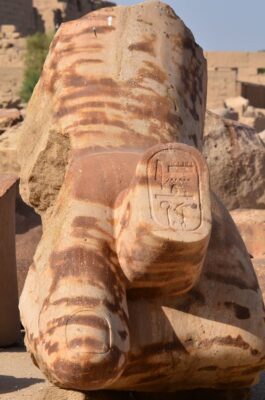
The Significance of Colossal Hand Fragment of King Amenhotep III
A Tangible Link to History
The colossal hand fragment adorned with Amenhotep III’s royal cartouche is more than just a piece of stone—it is a direct link to the grandeur of ancient Egypt. The cartouche, a symbolic oval containing the king’s name, affirms the artifact’s association with Amenhotep III, a ruler renowned for his prosperous and culturally rich reign during the 18th Dynasty.
The Monumental Statue Hypothesis
The intricate craftsmanship and massive scale of the fragment suggest it belonged to a larger-than-life statue. Scholars estimate that the statue, once fully intact, could have stood several meters tall and weighed multiple tons. Such a monumental structure likely depicted the king in divine grandeur, symbolizing his unparalleled power and authority over Egypt.
Context within the Karnak Temple Complex
Situated within the sprawling Karnak Temple Complex, the fragment adds to the site’s reputation as a center of royal and religious significance. The temple complex was not only a place of worship but also a stage for showcasing the might and divinity of Egypt’s rulers. The discovery of this fragment enriches our understanding of the architectural and artistic innovations of Amenhotep III’s era.
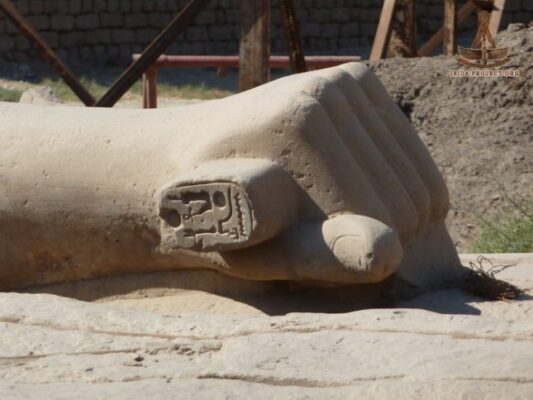
Amenhotep III: The Magnificent Ruler
A Golden Age of Prosperity
Amenhotep III, who ruled during the 14th century BCE, is celebrated for ushering in an era of unparalleled prosperity and artistic achievement. His reign marked the height of the 18th Dynasty, characterized by grand architectural projects, diplomatic successes, and flourishing arts.
Monumental Architecture of His Reign
The colossal hand fragment is a testament to Amenhotep III’s affinity for grandeur. He commissioned numerous monumental structures, including the famous Colossi of Memnon and the vast temple complex at Luxor. Each construction project served as a visual representation of his divine authority and enduring legacy.
Symbolism in His Statues
Statues of Amenhotep III often depicted him with divine attributes, reinforcing his role as both a king and a god on Earth. The discovery of this fragment underscores the meticulous artistry and symbolic depth embedded in these representations, which sought to immortalize the king’s legacy for eternity.
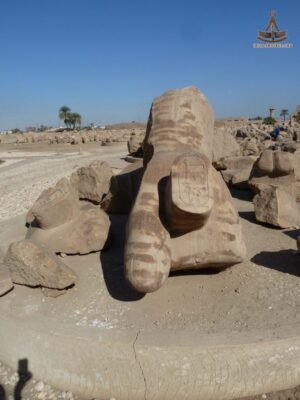
See more: The Remarkable Discovery of an Anglo-Saxon Woman with a Gas Pipe Through Her Skull
Insights from the Discovery
Advanced Craftsmanship
The fragment showcases the advanced craftsmanship of ancient Egyptian artisans. The precision in carving and the detailing of the cartouche reveal the exceptional skill and dedication required to create such monumental works of art.
Religious and Political Implications
The scale and symbolism of the statue, to which the hand fragment likely belonged, highlight the intertwining of religion and politics during Amenhotep III’s reign. By associating himself with divine imagery, the king reinforced his position as a god-like figure, uniting his subjects under his rule.
Contribution to Modern Archaeology
The discovery of the colossal hand fragment enriches our understanding of Amenhotep III’s reign and its impact on art, religion, and culture. It also underscores the importance of ongoing excavations at the Karnak Temple Complex, which continues to yield invaluable insights into ancient Egyptian civilization.
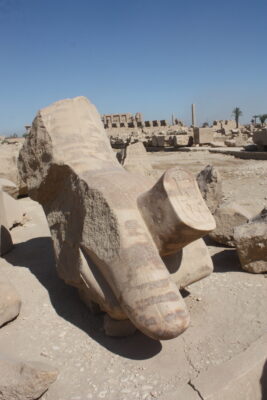
Conclusion
The colossal hand fragment of King Amenhotep III is more than a relic; it is a window into the splendor and complexity of ancient Egypt. From its craftsmanship to its historical and cultural significance, this artifact embodies the legacy of a ruler whose reign defined an era of magnificence. As excavations at Karnak continue, each new discovery brings us closer to unraveling the mysteries of one of history’s greatest civilizations.

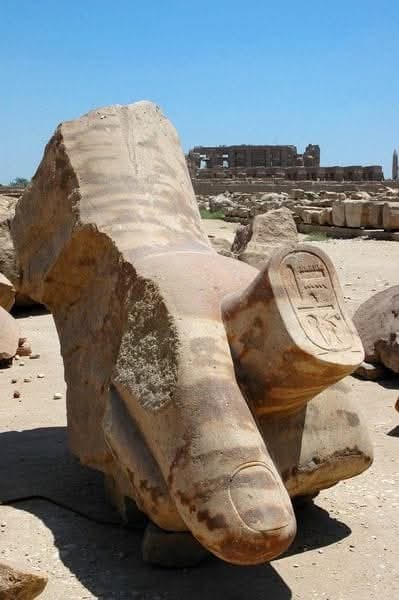
CÁC TIN KHÁC
Mary Walton: The Forgotten Inventor Who Helped Clean Up America’s Cities
Tomb of Queen Nefertari in the Valley of the Queens, Egypt
Discover the Hypostyle Hall of the Temple of Hathor at Dendera
Venus de Losange: Unveiling the Mystery of a 20,000-Year-Old Paleolithic Icon